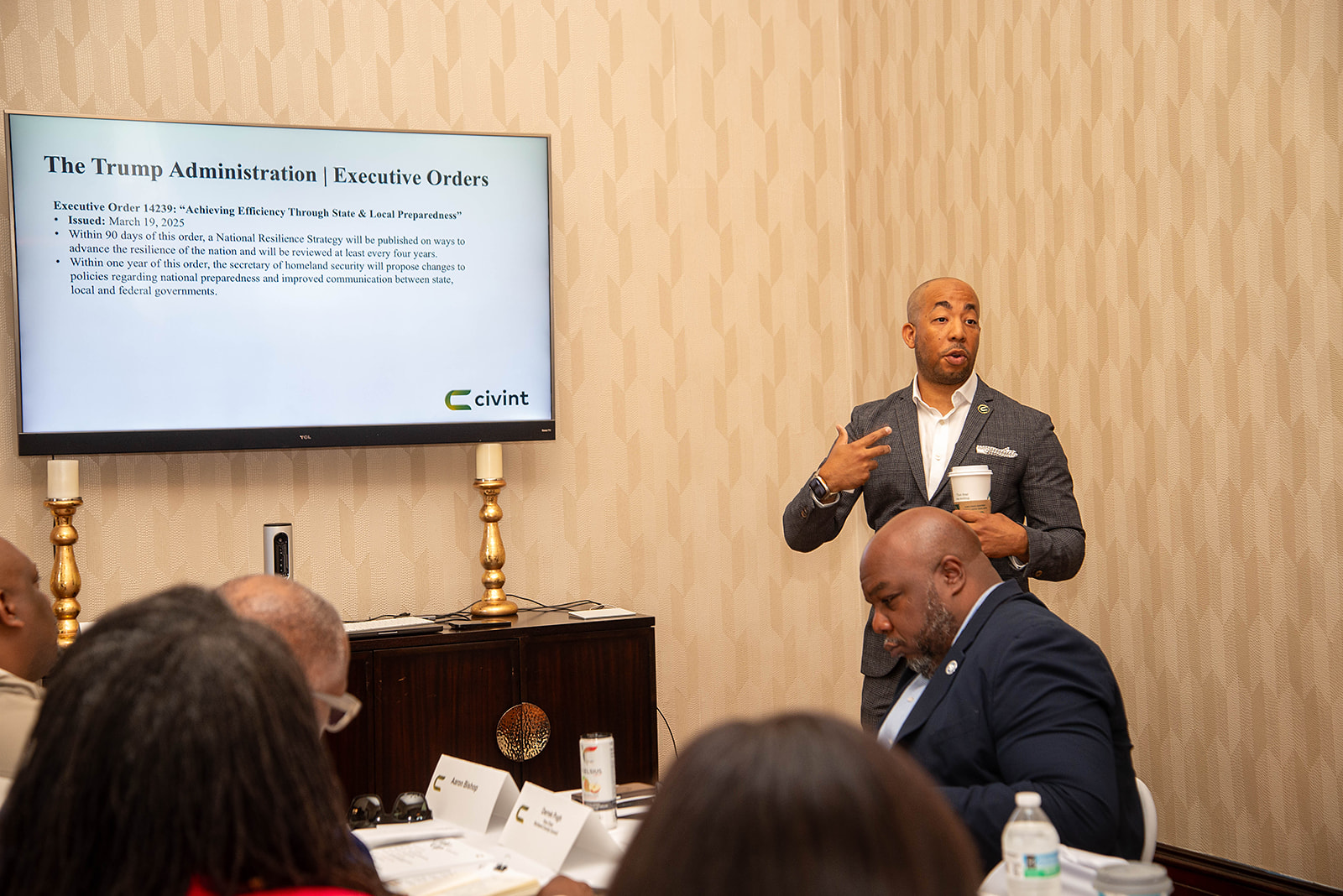Local government elected leaders and staff joined business and nonprofit leaders and policy experts from South Carolina, North Carolina, and Georgia in Columbia recently to examine the effects of early Trump Administration executive orders on local operations. Civint hosted this timely forum to share insights on how evolving federal directives are reshaping the landscape for cities and counties.
The presentation highlighted details of several executive orders with a focus on those directly impacting local budgets, programs, and services. Among the most significant:
- Department of Government Efficiency: Initiated across a number of federal departments resulting in staffing reductions and changes in grant administration that have created uncertainty for agencies working on housing, public health, and human services
- Deregulatory Transition Order: Designed to streamline government operations by limiting the types of services that federal agencies can support affecting many local programs that rely on federal coordination or technical assistance.
- Program Eligibility Clarification Memo: Directs agencies to review grant eligibility for organizations based on mission alignment, potentially excluding community groups focused on areas such as workforce development, language access, or environmental sustainability. While temporarily paused due to litigation, this order raises concerns for local partners.
- Federal Workforce Reduction Plan: Targets broader reductions in the federal workforce and includes the eliminating U.S. Interagency Council on Homelessness and the Minority Business Development Agency. Local governments often rely on these two entities for regional collaboration and technical resources.
City and county leaders shared strategies for adapting to these shifts, including updating grant language, developing alternative funding plans, and improving communication with constituents.

As these executive orders continue to take shape, cities and counties are prioritizing adaptability, fiscal planning, and intergovernmental coordination to ensure that essential services remain responsive and sustainable. Civint continues to stay on top of executive orders and their impact on local governments.
Sign up here for our newsletter to get updates on executive orders that impact local governments.




